-
Title (Dublin Core)
-
U. S. bombs and shelters
-
Article Title and/or Image Caption (Dublin Core)
-
U. S. bombs and shelters
-
extracted text (Extract Text)
-
~ HOW 10 TONS OF BOMBS can be carried
by a Flying Fortress is shown strikingly in |
| this view of one of the big Boeing bombers
on a practice flight near Mount Rainier in
; the State of Washington. Outside racks
with forklike fingers hold the extra bombs
on the bottom of the fuselage near the land-
ing wheels. This supplementary arrange-
ment permits the carrying of an unusually
heavy load for limited-range operations.
SHREDDED AND NEATLY BALED in 200-
pound packages, tin cans, automobile bodies,
old stoves, and all kinds of scrap iron are
made ready for reprocessing in a huge ma-
chine devised by Clarence M. Gregg, presi-
dent of the Los Angeles By-Products Com-
pany. Chrome molybdenum hammers or
cutters on the outside of a drum revolve at
1,800 r.p.m. to break up the pieces into tiny
bits, which ride through a magnetic sepa-
rator that deposits dirt and nonferrous
metal in one bin and iron in another. Auto-
matic balers then bind the iron scrap into
bales of uniform density. ]
A BOMBPROOF LABORATORY for
processing photographic material at
the front has heen designed by the
165th Signal Photographic Company
at Fort Sam Houston, Tex. As shown
in the drawing by military artist
Swanlund, the underground darkroom pro- |
vides a working space of about six by 12
feet and is entered through a protective
right-angle passageway. One of its features
is a ceiling rack in which a camera can be |
placed, as demonstrated by Sergeant Smoody
in the photograph above, for use in making -
enlargements. Heavy sandbagging guards
against damage by bombs and shells, so
that work can be carried on under fire.
GIANT ENCLOSED MOTORS, such as the
one shown below, are being built by General
Dlectric for tankers of the U.S. Maritime
Commission. Each motor has a sheet-iron
cover as a protection against dirt, and is
equipped with an air-recirculation system.
Cool air entering at the bottom of the motor
rises as it becomes heated and is then piped
off into a cooling blower, which carries it
back to the bottom of the motor.
ALNICO MAGNETS set in
the bases of the standards are
simplifying the setting up of |
experimental optical systems.
Adhering to a metal table top
or wall, the magnets hold the
system in position and pre-
vent any disarrangement even
when adjustments are made.
This use of alnico was devised
by Norman Barnes of Gen-
eral Electric. |
NEW GASOLINE OVENS are
being used by the U.S. Army
Quartermaster Corps for baking
in the field. Shown at right are
eight of these two-chamber
ovens, which can do the baking
for 10,000 men. Tended by a
bakery platoon of 36 men, and
using 3,600 pounds of flour, this
battery of ovens can turn out
5,000 pounds of bread in 24
hours. Below: fire-control units.
A BRAKE TESTER for
airplanes has been de-
veloped by the Safety
Equipment Co., of
South Bend, Ind. The
device cradles the
plane’s rubber tires
between rollers that
provide traction equal
to that of dry con-
crete. When the
brakes are applied,
the force needed to
turn the wheels is
registered on a dial,
which gauges the
braking action.
AMPHIBIOUS FLOATS, attached experimentally
to the Army Air Forces’ C-47, may make this big
cargo transport an efficient seaplane as well as a
land plane. Tried out at Wright Field, Dayton,
Ohio, the new floats enabled the plane to alight
on water, taxi to shore, and climb on land under
its own power. This may prove particularly use-
ful in rescues of flyers on coral reefs in the Pacific.
Further experimentation is being carried out by
the AAF in the design and use of the floats.
CLEAR PLASTIC DOMES are being
mounted on open antiaircraft observa-
tion posts along the Atlantic seaboard
to keep sky watchers dry and com-
fortable. Built of Lumarith, made by
the Cellanese Celluloid Corporation, of
New York, the domes offer shelter
from rain, sleet, and snow without
cutting visibility, and also improve
communication by screening out noise.
“GEEHEEBEE" is the name
that U. S. soldiers and sail-
ors have given to the odd
contraption shown at the
left. Much in evidence where
amphibious operations are in
progress, it performs yeo-
man service when repairs or
repainting must be done on
the landing barges and other
small invasion craft.
The “geeheebee” is backed
by a tractor into the surf un-
til it settles over a landing
boat or other small craft,
which is then chained to the
frame. As the tractor pulls
the two ashore, the boat is
lifted clear of the ground.
After repairs have been com-
pleted, the procedure is re-
versed to relaunch the craft.
Empty oil drums on the
“geeheebee” permit it to be
floated ashore from a trans-
port or other large vessel.
PLASTIC EAR STOPPERS are now molded
from Plexiglas to fit the ear canal. De-
signed by Arthur F. Farman, an employee
at McClellan Field in
California, they are
manufactured by Rohm
& Haas Company, of
Philadelphia, Pa.
TWIN THREADS
are a new idea
for screws for
wood, plastic,
and combination
assemblies. These
screws, made by
the Blake &
Johnson Com-
pany, of Water-
ville, Conn., have
straight sides, re-
lieved shank di-
ameter, and a
single balanced
point.
TWO MEN OPERATING
this grid machine, developed
by Lyle F. Pierce, chief of
master layouts at the Boeing
plant in Seattle, can make in
one day a crosshatched back-
ground for full-scale mechan-
ical drawings that once took
six months. The machine
scribes simultaneously 12
parallel lines 100 inches long
and accurate to .005 inch.
Backgrounds thus made
on painted steel are joined
together, sometimes into
sheets 20 by 30 feet, for
basés on which full-size
drawings are put for parts of
Boeing planes.
-
Language (Dublin Core)
-
eng
-
Date Issued (Dublin Core)
-
1943-11
-
pages (Bibliographic Ontology)
-
106-111
-
Rights (Dublin Core)
-
Public Domain (Google Digitized)
-
Archived by (Dublin Core)
-
Matteo Ridolfi
-
Marco Bortolami (editor)
 Popular Science Monthly, vol. 143, n. 5, 1943
Popular Science Monthly, vol. 143, n. 5, 1943
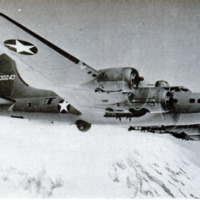 Schermata 2022-10-18 alle 15.26.25.png
Schermata 2022-10-18 alle 15.26.25.png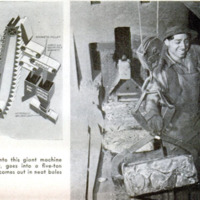 Schermata 2022-10-18 alle 15.26.31.png
Schermata 2022-10-18 alle 15.26.31.png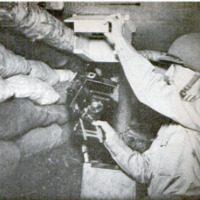 Schermata 2022-10-18 alle 15.26.40.png
Schermata 2022-10-18 alle 15.26.40.png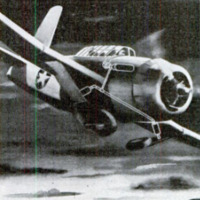 Schermata 2022-10-18 alle 15.26.48.png
Schermata 2022-10-18 alle 15.26.48.png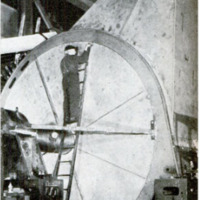 Schermata 2022-10-18 alle 15.26.53.png
Schermata 2022-10-18 alle 15.26.53.png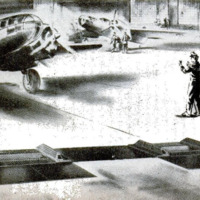 Schermata 2022-10-18 alle 15.27.03.png
Schermata 2022-10-18 alle 15.27.03.png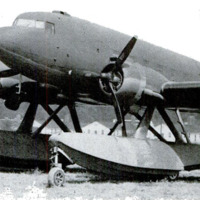 Schermata 2022-10-18 alle 15.27.10.png
Schermata 2022-10-18 alle 15.27.10.png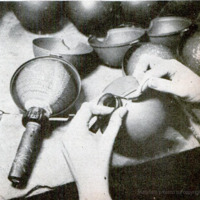 Schermata 2022-10-18 alle 15.27.22.png
Schermata 2022-10-18 alle 15.27.22.png







